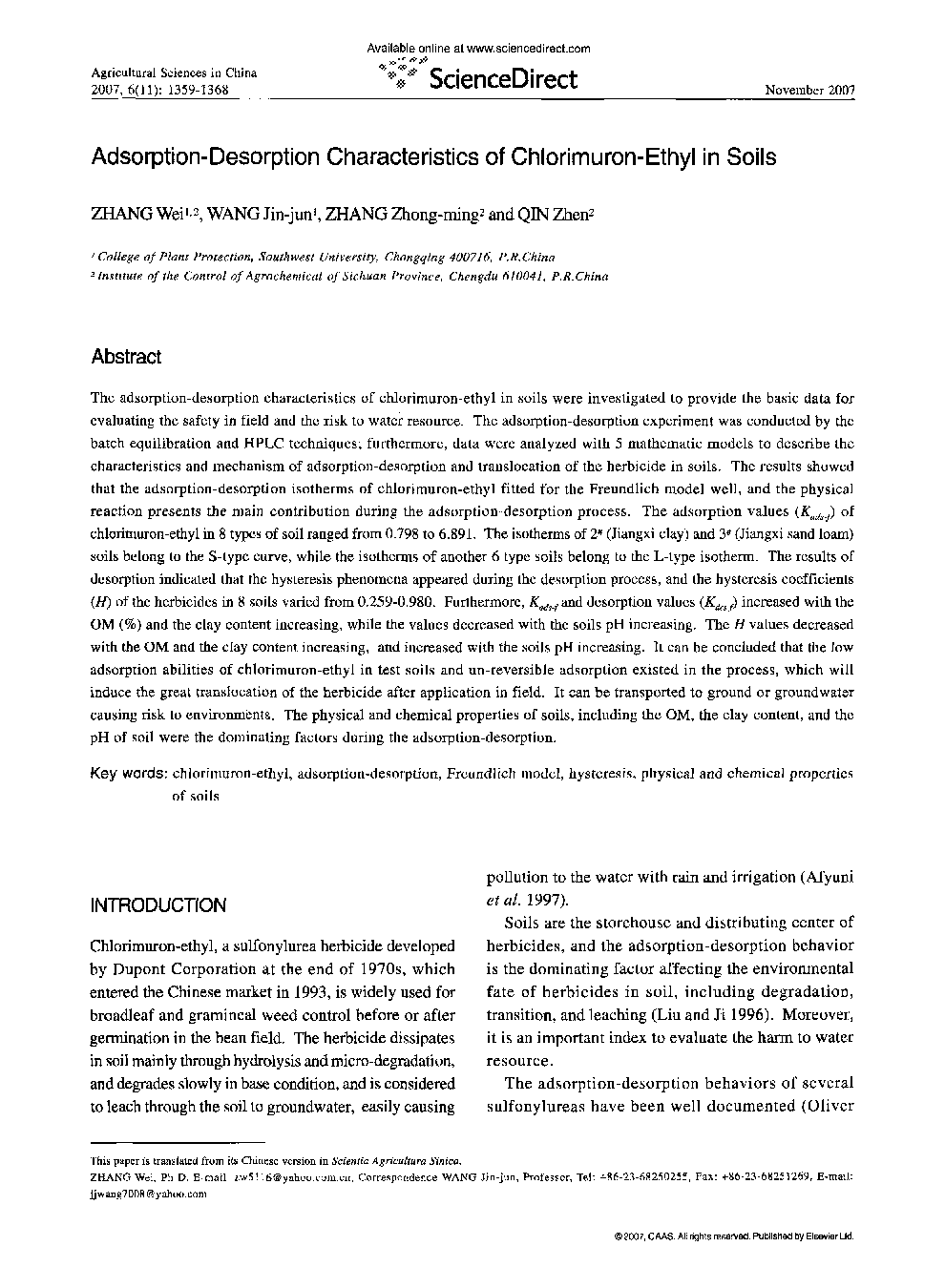| Article ID | Journal | Published Year | Pages | File Type |
|---|---|---|---|---|
| 4490779 | Agricultural Sciences in China | 2007 | 10 Pages |
The adsorption-desorption characteristics of chlorimuron-ethyl in soils were investigated to provide the basic data for evaluating the safety in field and the risk to water resource. The adsorption-desorption experiment was conducted by the batch equilibration and HPLC techniques; furthermore, data were analyzed with 5 mathematic models to describe the characteristics and mechanism of adsorption-desorption and translocation of the herbicide in soils. The results showed that the adsorption-desorption isotherms of chlorimuron-ethyl fitted for the Freundlich model well, and the physical reaction presents the main contribution during the adsorption-desorption process. The adsorption values (Kads-f) of chlorimuron-ethyl in 8 types of soil ranged from 0.798 to 6.891. The isotherms of 2# (Jiangxi clay) and 3# (Jiangxi sand loam) soils belong to the S-type curve, while the isotherms of another 6 type soils belong to the L-type isotherm. The results of desorption indicated that the hysteresis phenomena appeared during the desorption process, and the hysteresis coefficients (H) of the herbicides in 8 soils varied from 0.259-0.980. Furthermore, Kads-f and desorption values (Kdes-f) increased with the OM (%) and the clay content increasing, while the values decreased with the soils pH increasing. The H values decreased with the OM and the clay content increasing, and increased with the soils pH increasing. It can be concluded that the low adsorption abilities of chlorimuron-ethyl in test soils and un-reversible adsorption existed in the process, which will induce the great translocation of the herbicide after application in field. It can be transported to ground or groundwater causing risk to environments. The physical and chemical properties of soils, including the OM, the clay content, and the pH of soil were the dominating factors during the adsorption-desorption.
